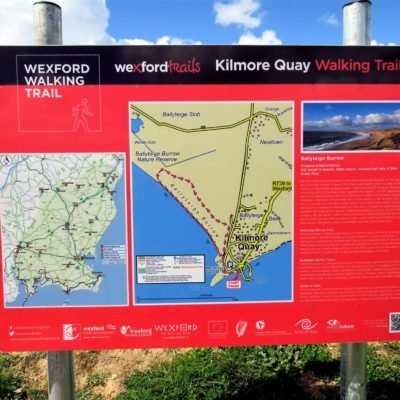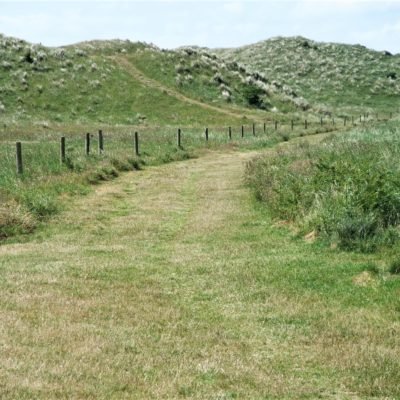Ballyteige Burrow is one of the most impressive shingle-based dune systems in Ireland. The fixed dunes support several declining plant communities, rare species of lichen and flowering plants, and scarce insects that benefit from the southerly location, the abundance of sand, and the highest mean daily duration of bright sunshine recorded in Ireland.
The dunes support the largest population of Wild Asparagus in Ireland and Scrambled-egg Lichen that has been recorded nowhere else in the country. The site also supports a coastal lagoon, mudflats and estuary.
The Cull is a wetland rich in waders and waterfowl. The hind-dune slob or polder provides feeding from Whooper Swans in winter. Kilmore Quay is noted for its outcrops of ancient rocks that are among the oldest found in Ireland. The Kilmore Quay Walking Trail runs behind the dunes and along the beach while another walk, St Clomaun’s Way, explores the river and Hazel wood at Duncormick.
Ballyteige Burrow is Special Protection Area (SPA) IE0004020 for seven named species of geese, ducks and waders and wetland and water birds in general. The site is also Special Area of Conservation (SAC) IE0000696 for thirteen wetland and sand dune habitats of good quality making the site an area of major ecological value.

Further reading
- Introduction
- Kilmore Quay Walking Trail
- Dune grasses
- ‘The Three Lagoons’ leaflet
- Cull Pond overview
- Cull Pond report
- Bridgetown Canal
- Ballycross Trails
- Duncormick habitats
- Saltmarshes
- St Clomaun’s Way leaflet
Note. The SWC Promotions eircom email address and 053 landline ‘phone number given in some older leaflets are no longer active; please use the ‘Contact’ tab to get in touch. Thank you.




